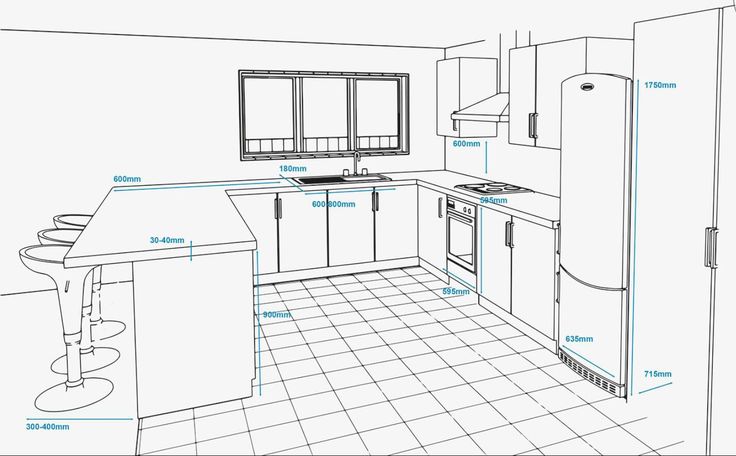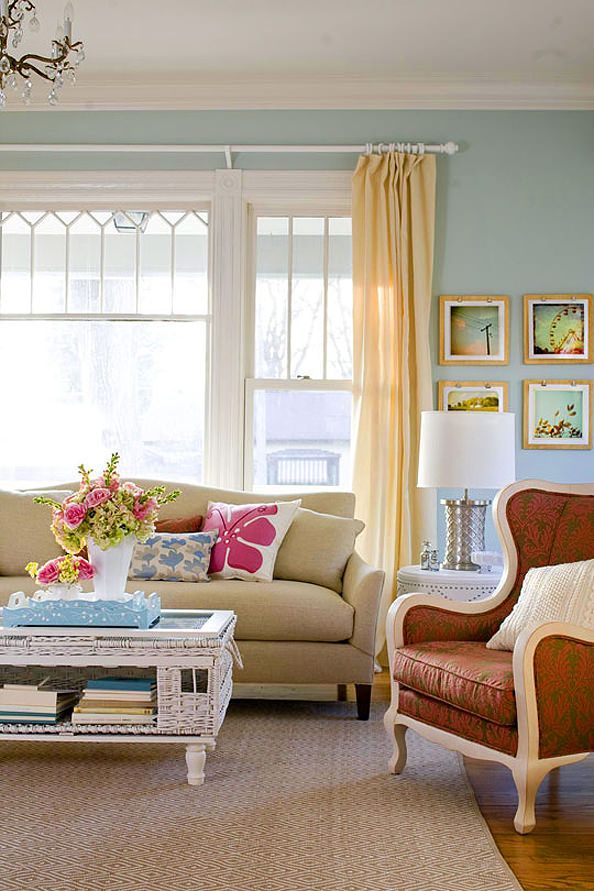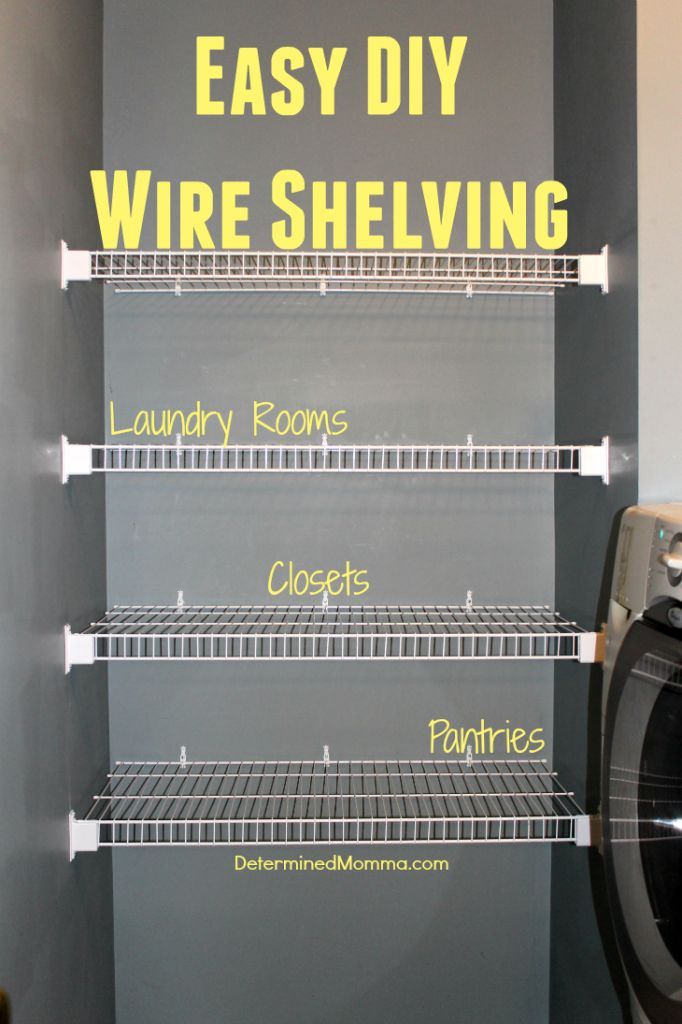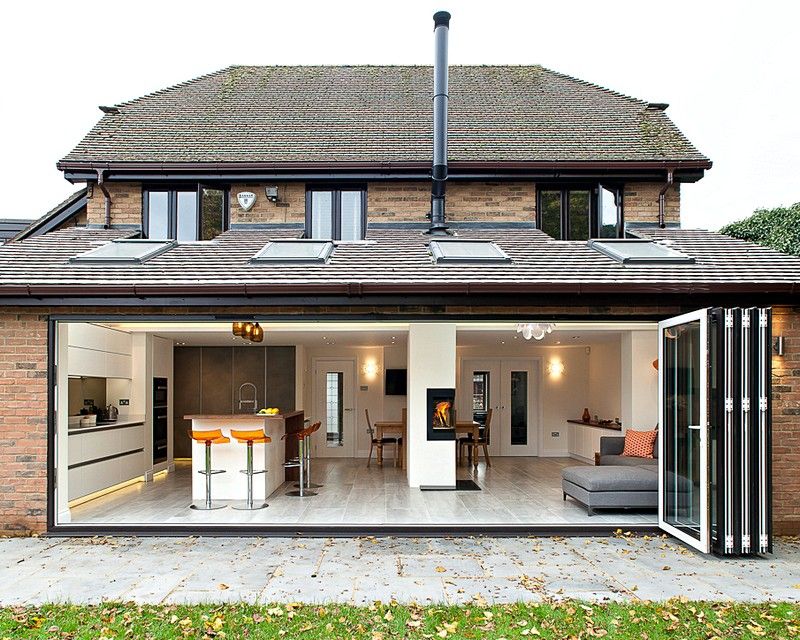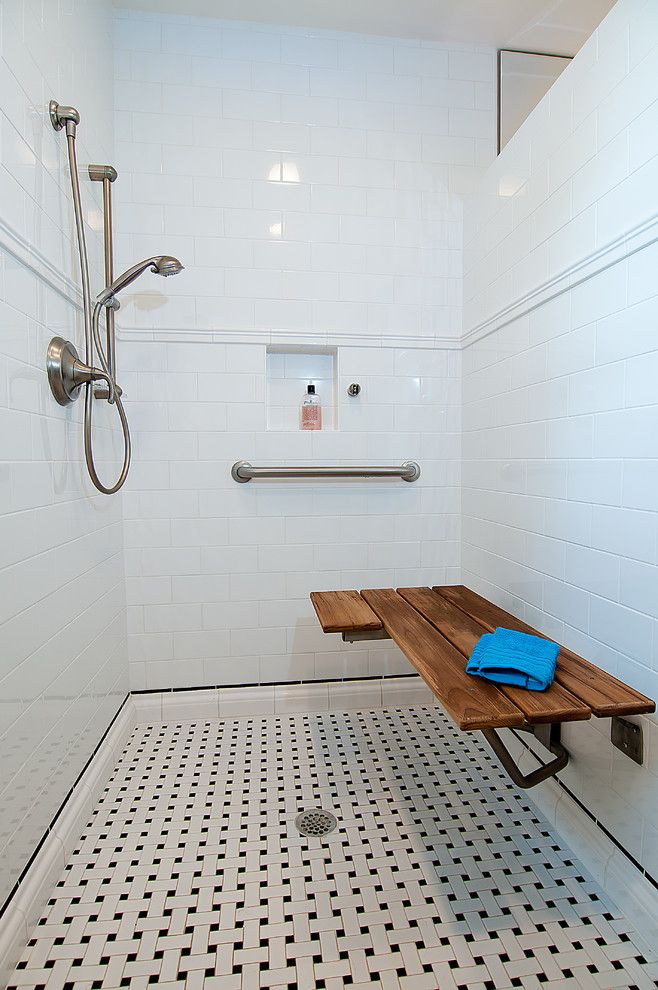Small kitchen island dimensions
Kitchen Island Ideas: Design Yours to Fit Your Needs
For a lot of my clients, no kitchen design is complete without a kitchen island at its center. The island has become the icon of the modern kitchen—the 21st-century equivalent of the old-fashioned hearth. It's easy to understand why.
Why Build a Kitchen Island?
First, islands work. Because they can be accessed from all sides like the old kitchen table, they're ideal for a variety of kitchen tasks (see "Uses for a Kitchen Island," below).
Second, these freestanding pieces instantly become the focal point of a kitchen because they can have the look and feel of furniture rather than components in a domestic laboratory.
Third, islands help kitchens adjust to some of the big changes in American life in the past few decades. In June Cleaver's 1950s kitchen, all the appliances and cabinets were tacked to the walls of a closed-in room. Today's kitchens are not only open to other rooms but they also have to accommodate multiple cooks, kids doing homework, and even party guests.
A well-designed island offers a place for people to congregate while at the same time separating those who are cooking and cleaning from those who are just hanging out.
When planning an island, here are the key points to consider.
Uses for a Kitchen Island
Islands have to work to make them earn the space they occupy. Here are the four things islands can do and some design suggestions for each function. (If you want an even more in-depth review, read our “All About Kitchen Islands” article.)
Cleanup- Clearance for the dishwasher door in the open position.
- Pull-out garbage and compost bins next to the sink.
- Easy access to dish and silverware storage.
- Storage for dish towels, dish soap, etc.
- Dual-height counters to hide dirty dishes from view.
- Outlets for small appliances.
- Refrigerator and cooktop close by.
- Access to compost bin or disposer.
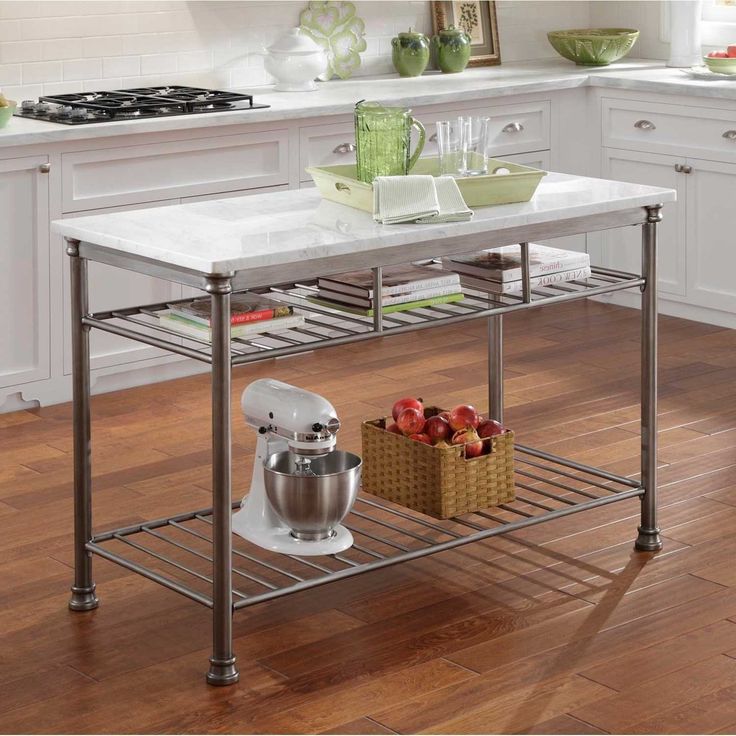
- Prep sink and butcher-block counters are good additions.
- Heat-resistant countertop (stone, tile, metal) for hot pans.
- At least 18 inches of space on either side of cooktop or range.
- Overhead vent hood or downdraft fan (with second exhaust fan in ceiling).
- Raised eating area out of the range of spatters.
- Counter height/width designed for standard-size chairs/stools.
- Softly contoured edge profile is most comfortable for leaning on.
Size and Placement
Kitchen islands suck space. At minimum, an island should be 4 feet long and a little more than 2 feet deep, but it must also have room for people to move and work around it.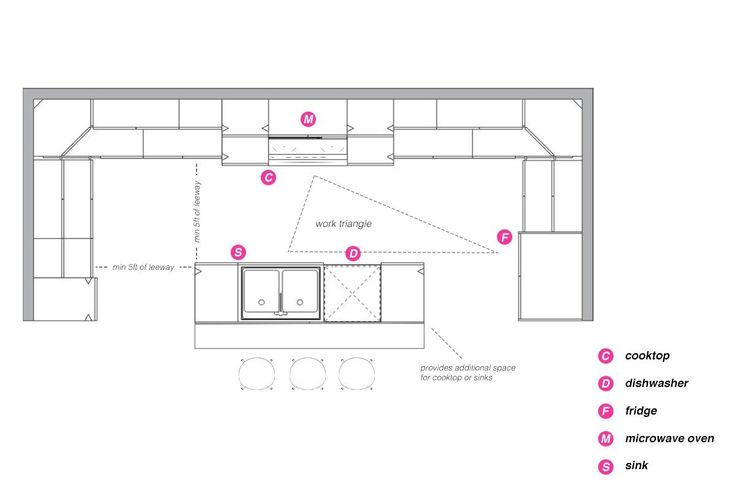 Unless your kitchen is at least 8 feet deep and more than 12 feet long, don't even think about an island. (For more on practical dimensions for islands and the minimum space around them, see "Island Minimums," above, or watch Tom Silva discuss how to size a kitchen island.)
Unless your kitchen is at least 8 feet deep and more than 12 feet long, don't even think about an island. (For more on practical dimensions for islands and the minimum space around them, see "Island Minimums," above, or watch Tom Silva discuss how to size a kitchen island.)
Lighting
Where you have activity, you need light. For islands, that means dedicated lighting—you can’t count on ambient light to illuminate your workspace, and you don’t have upper cabinets to hide task lights, as you do elsewhere in the kitchen.
As with most task lighting, you want the light to come straight down onto the island. The most common choice is recessed lighting, which is relatively easy if you have standard-height ceilings but trickier with high ceilings. If the distance from the countertop to the ceiling is greater than 6 feet, you’ll need to use fixtures or bulbs specially designed to project light down rather than spread it out.
Pendant Lighting
Another option is pendant lights, which hang from the ceiling.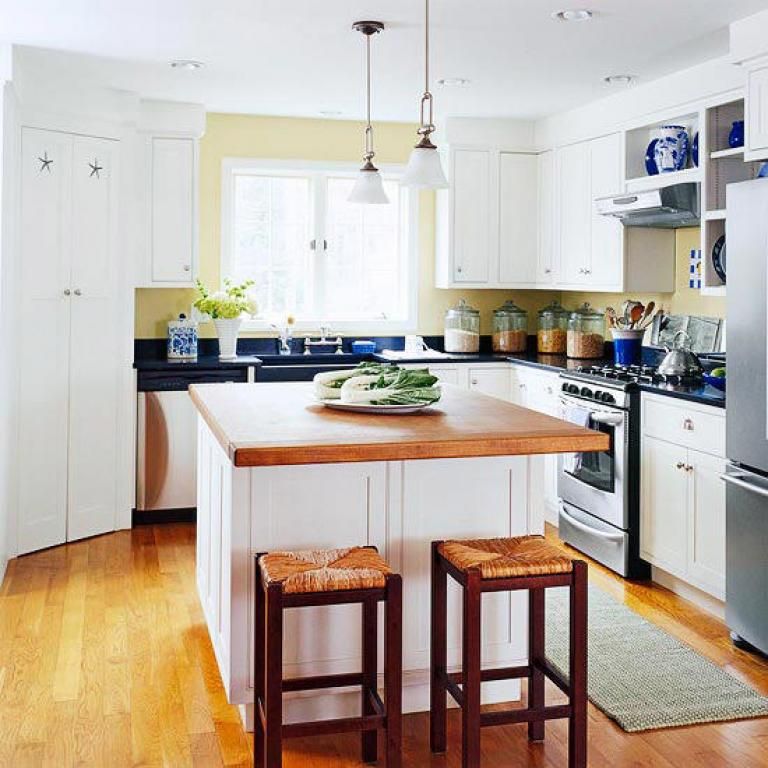 Be careful with these, though. It’s easy to end up with them at the wrong height, which can either block your view from the island or blind you with a high-intensity bulb shining directly into your eyes. Whatever type of lighting you choose, make sure it can be dimmed when you don’t need maximum illumination for working.
Be careful with these, though. It’s easy to end up with them at the wrong height, which can either block your view from the island or blind you with a high-intensity bulb shining directly into your eyes. Whatever type of lighting you choose, make sure it can be dimmed when you don’t need maximum illumination for working.
Storage Space
You can gain valuable real estate on both the "working" side and the "public" side of an island for storage, always a critical need in kitchens. On the public side, take advantage of shallow cabinets (installed back-to-back, with deeper cabinets facing the kitchen) for serving items—napkins, cutlery, platters, etc.—that don't need to be in the food prep area.
On the working side, make sure there's room to store the things that are needed for the activity the island supports, because an island's strong suit is also its biggest downfall: It's isolated. If it's a cooking island, then pots, pans, and spices should be at hand. The space under cooktops is great for deep drawers for pots and pans. (The temptation is to hang them from an expensive pot rack, which won't hold deeper pots or lids and gets in the way of your view.)
(The temptation is to hang them from an expensive pot rack, which won't hold deeper pots or lids and gets in the way of your view.)
If it's a prep island, don't forget storage for knives and small appliances like mixers and food processors (consider pop-ups — platforms that swing out from behind a door in the island base—or appliance garages for these), and convenient access to garbage and compost bins. If the island is going to be dedicated to cleanup, you'll need a place for dish towels, detergent, and brushes.
Undercounter storage space is limited on islands that include a sink and/or major appliances like a dishwasher or oven; you'll have to plan more carefully for those. The same is true for cooktops with downdraft fans, the machinery for which must be stored in the cabinet below. One way around this is to use the ends of the island. Round ends are perfect for lazy Susans, and almost any island end can accommodate open shelving or even a shallow cabinet.
Duo DickinsonVent Hood
Life would be a lot easier if you could just ignore ventilating an island dedicated to cooking — but you can't.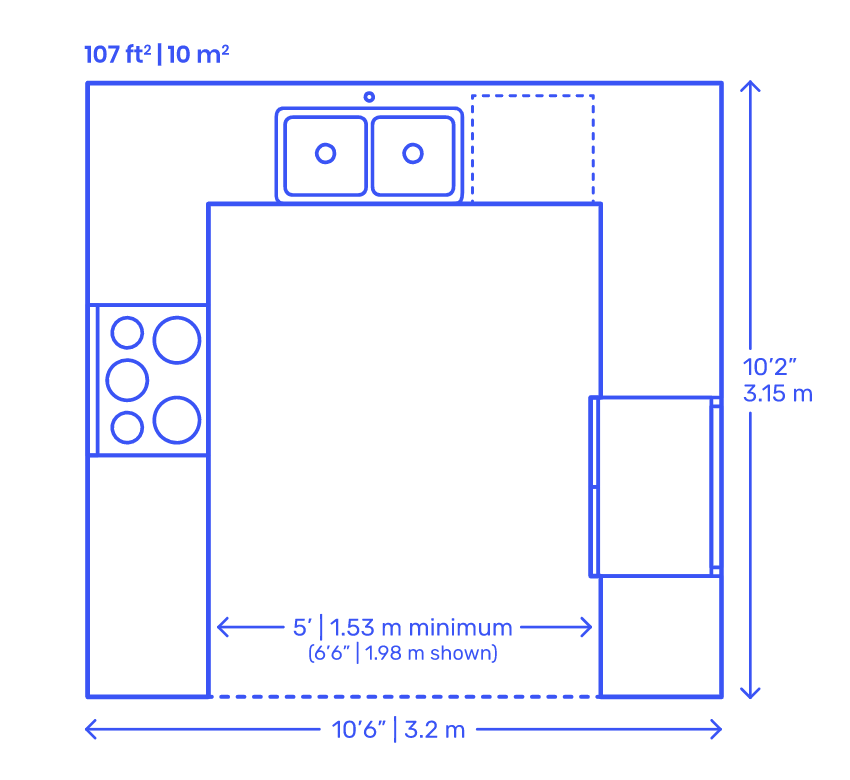 The most common scheme is to install a downdraft fan behind the cooktop; in some cooktops and ranges it's incorporated into the appliance. That solves the visual problem of an overhead hood messing up sight lines. But even the best downdraft fan is not up to the worst cooking odors. If you really want to lose the fried fish smell, include a second exhaust fan mounted in the ceiling. It will also help limit the amount of moisture condensing on the inside of your windows in the winter when you use a tall stockpot.
The most common scheme is to install a downdraft fan behind the cooktop; in some cooktops and ranges it's incorporated into the appliance. That solves the visual problem of an overhead hood messing up sight lines. But even the best downdraft fan is not up to the worst cooking odors. If you really want to lose the fried fish smell, include a second exhaust fan mounted in the ceiling. It will also help limit the amount of moisture condensing on the inside of your windows in the winter when you use a tall stockpot.
The other option is an overhead hood that extends up through the ceiling. Because it's exposed on all sides, it must be completely finished (read expensive), and it becomes a dominant element of the design. You can opt for manufactured versions, or get a hood custom-built and finished in just about any material. The big caution here: It's easy for the mass of a hood, placed low enough to be effective, to ruin the joy of having open space above the island.
Counter Height
Dual-height islands can create informal eating areas, hide dirty dishes, protect noncooks from splashes and splatters, and make kitchens more interesting.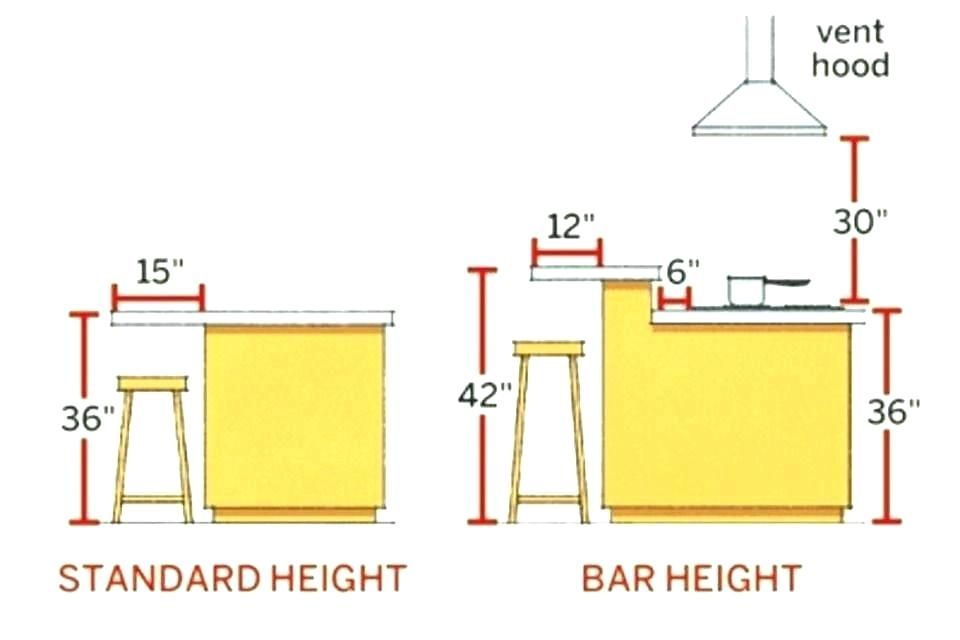 Here are the dimensions that make them most comfortable, useful, and pleasing.
Here are the dimensions that make them most comfortable, useful, and pleasing.
The height of your island's eating area dictates the type of seating you'll have: A 28- to 30-inch-high counter works best with a chair; a standard-height 36-inch counter is served best by a low stool; and a 42- to 48-inch counter requires a bar stool.
Styles for Kitchen Islands
You can make an island nearly disappear to anyone not working in the kitchen by extending the "public" face of the island (the one that doesn't face the kitchen) 4 to 6 inches above the countertop and covering it in the same surface material as the rest of the interior walls.
Islands that mimic the rest of the kitchen, typically by using cabinets in the same finish and from the same manufacturer, don't call attention to themselves. Most islands in American kitchens use this scheme.
Resource
Architect
Duo Dickinson
Madison, CT
203-245-0405
duodickinson.com
How to calculate your kitchen island size according to experts
When you purchase through links on our site, we may earn an affiliate commission.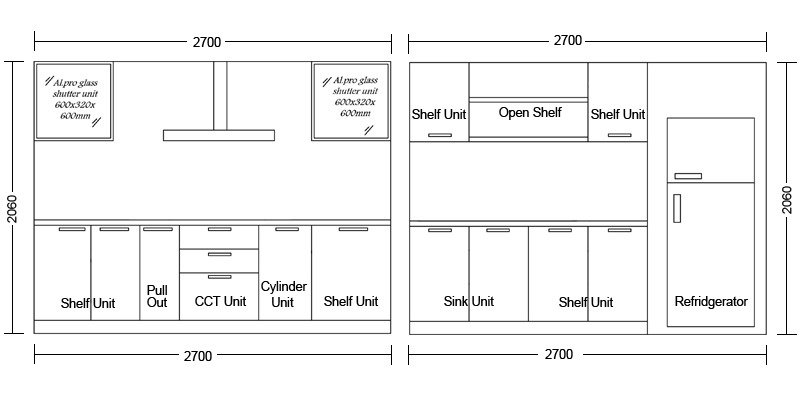 Here’s how it works.
Here’s how it works.
(Image credit: VERONICA RODRIGUEZ)
Join our newsletter
Thank you for signing up to Realhomes. You will receive a verification email shortly.
There was a problem. Please refresh the page and try again.
By submitting your information you agree to the Terms & Conditions and Privacy Policy and are aged 16 or over.The correct kitchen island size is key if the room is to function as it should and make food preparation and cooking efficient and safe. An island that’s too big can impede the flow around the room, or not prove as useful as it should, while one that’s too small can spoil your kitchen's style, and compromise its utility.
Your kitchen island ideas might make it an additional working area for the room, a place for the family to eat, or a feature where visitors gather, but whatever functions it fulfills, kitchen island dimensions are crucial to a great remodel.
We’ve asked the experts to share exactly what you need to know about calculating for your kitchen island size to ensure optimum style and function in this very important space.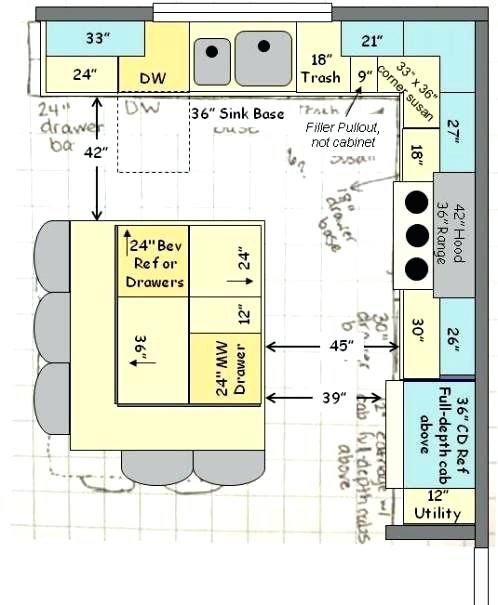
Kitchen island size: the essentials
If an island is on your list of kitchen ideas, be mindful that it does require a relatively generous space. Is there a standard size you should aim for? The answer is no.
‘There really isn’t a typical island size because you are fitting each island to each particular kitchen keeping in mind the clearances allowed that let people walk around and open cabinets and appliances,’ explains Amber Carfield, lead designer at Scottsdale kitchen remodeler Kitchens by Good Guys . ‘A kitchen island should be custom built so there really isn’t a one-size-fits-all island.’
However, although there isn’t a standard kitchen island size, there is a kitchen island average size and this is 40 by 80 inches (around 1 by 2 metres).
A vital factor in a successful design is the space around the island. ‘I always make sure there’s at least 36 to 48 inches around the island for accessibility and maneuverability around the kitchen,’ says architect Jenn Smith . ‘Anything less and the kitchen won’t function properly.’
‘Anything less and the kitchen won’t function properly.’
Think proportion, too. ‘Kitchen islands should take up between one tenth to one fifteenth of your overall kitchen area,’ says Volodymyr Barabakh, co-founder and project director of Fortress Home . ‘You therefore generally want to err on the smaller side in comparison to your overall kitchen floor space. One fifteenth of your overall kitchen floor space is what you want ideally.’
Can your kitchen be too small for an island? ‘In most cases, you should have a kitchen of at least 150 square foot (14 square meters) to comfortably have an island,’ says Volodymyr Barabakh. Don’t despair if your room is on the small side, though. For more compact rooms small kitchen island ideas can help you get the counter space you’re hankering after.
Where to start when planning kitchen island measurements
It’s important here to consider how your island will be used, as well as following kitchen island size guidelines.
‘I always begin the kitchen design process with a series of questions to the client,’ says Barry Schneider, owner of European Kitchen Center .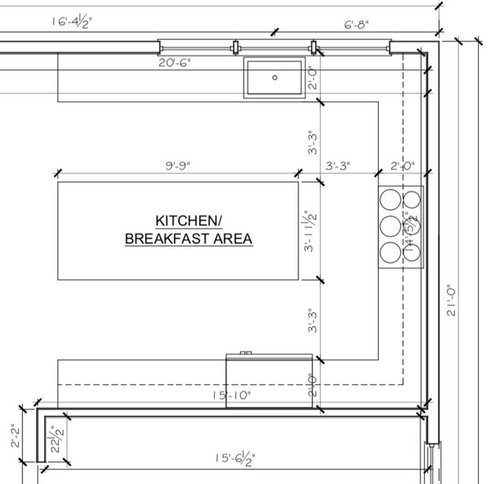 ‘What is your family size? What is your family dynamic? What are your cooking and dining habits? Do you entertain, and how often?
‘What is your family size? What is your family dynamic? What are your cooking and dining habits? Do you entertain, and how often?
‘The answers determine the kitchen flow and the passage size around the island. Typically, the passage will range from 39 inches (at the minimum) to 48 inches. I use the deduction method, where I subtract cabinet depth and passage length from the total space to deduce the island’s size. This method works well for medium to large kitchen spaces.’
DIYing a kitchen remodel? Plan in outlets. ‘An electrical outlet must be provided every 4 feet, including on an island (with GFCI protection),’ says professional engineer and certified home inspector Mike Powell, owner/trainer at Red Flag Home Inspection . ‘If electrical is not run to the island during the construction activities, it will prove a costly situation to mitigate after construction is complete.’
How big should a kitchen island be?
We’ve talked about the kitchen space, but what else is essential to know about the size of a kitchen island? Elyse Moody, kitchen design expert at Designer Appliances agrees that its proportions depend on the size of your kitchen, but she adds that also important is ‘whether you intend to use your island for prep only or as a seating area.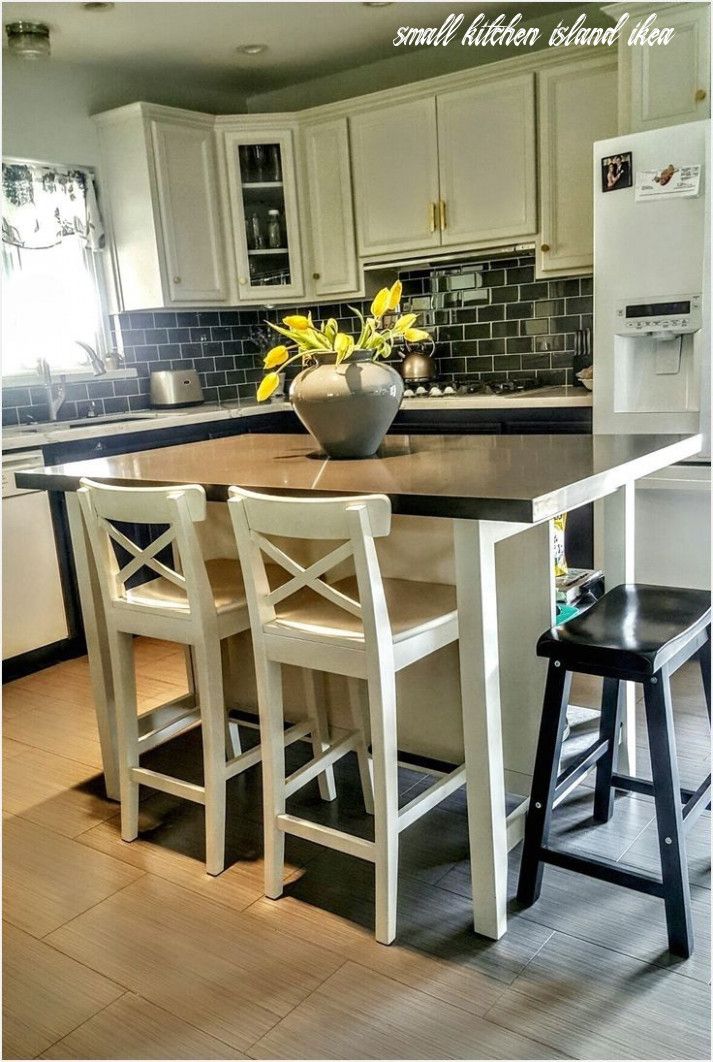 ’
’
As for kitchen island depth if it's to be used as a seating area as well as for other purposes? ‘For the depth, standard cabinets are 24 inches deep, so at a minimum, islands should be 42 to 48 inches deep. This allows for plenty of leg room and creates ample comfort while sitting at the island,’ says architect Jenn Smith
There’s another consideration that’s often missed in thinking about kitchen island size. ‘Many people dream of having a large kitchen island, but they fail to consider the maximum size that their countertop material comes in,’ explains architect Mona Ying Reeves, founder of Kickstart House .
‘Exceeding a standard size or length could add substantial cost to your island. Solid slabs often max out at 8 to 10 feet (2.4 to 3m) depending on the material, and butcher blocks are limited as well due to production and transportation constraints,’ she says.
Combing slabs can also create problems with seams. ‘Depending on the pattern, it may be really obvious where the seam is located and sometimes it’s barely noticeable.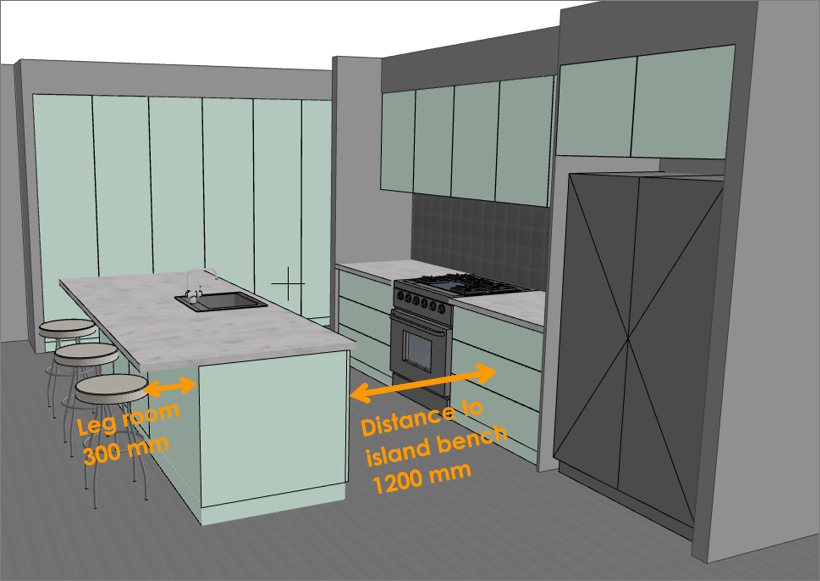 It all depends on the countertop color and pattern, plus the skill of the installer,’ explains Jenn Smith.
It all depends on the countertop color and pattern, plus the skill of the installer,’ explains Jenn Smith.
As we’ve discussed above, a large kitchen island design needs to take into account the slab size available for your chosen kitchen countertop. But if your kitchen is really large, it’s not only the countertop material’s length that should be considered.
‘Almost any kitchen island will naturally be proportional to the space, as the size is typically dictated by three sides of base and wall cabinets which will determine the length of the center island,’ says Jay Kallos, senior vice president of architecture at Ashton Woods .
‘If you have a really wide space where this guidance isn’t present, your guiding factors are what works aesthetically and ergonomically in the space. This might be an instance where two square islands in line work best by providing access at the midpoint of what would be an island big enough to park a car on without the break. For an extra deep kitchen, two parallel islands work really well, allowing one to be a “working” island and the other left to dining, studying or partying.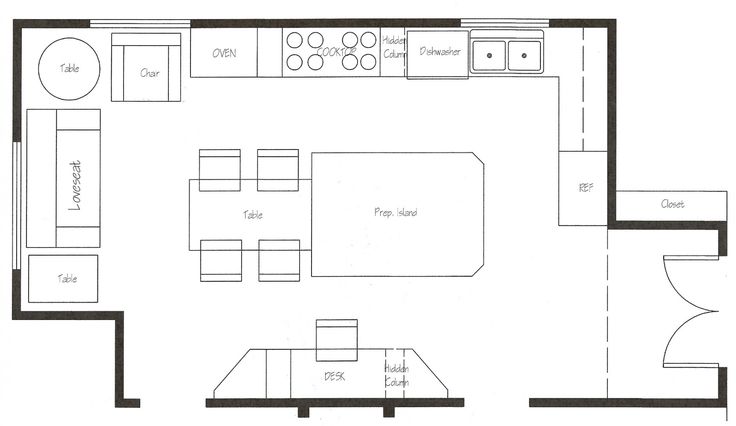 ’
’
Be sure to think about practicalities as well. ‘Your island shouldn’t be so wide that you can’t reach the center from both sides to clean,’ says Teri Simone, head of design for Nieu Cabinet Doors .
‘For length, it’s important to consider what the island is blocking access to. If the island is so big that you are walking a long way around to access elements of your working triangle, it’s too big.’
How much space should there be between the island and the counter?
When you’re thinking kitchen island size, the distance between the island and the counter is absolutely crucial.
‘If it’s just an island and you don’t have bar stools on one side, you need to have at least 3 feet (1m) and not more than 4 feet (1.2m) between the island and the surrounding counters or wall,’ recommends Elyse Moody.
‘If you have bar seating that traffic will flow behind, you need at least 4 feet (1.2m) of space behind the stools, between the island and the adjacent counters or walls. ’
’
Mona Ying Reeves agrees: ‘Make sure you leave adequate walking and working room on either side. Local codes will dictate what those minimums are (typically 3 feet (1m)) and it’s good to leave more space (42 to 48 inches (1 to 1.2m)) for working areas where appliance doors open.’
How much overhang should a kitchen island have?
If your kitchen island is used as a seating area, it will need an overhang. ‘A standard counter overhang is 12 inches (30.5cm),’ says Elyse Moody. ‘Whether or not it needs support underneath depends on your countertop material.’
Jay Kallos agrees. ‘A good overhang for eating is 12 inches (30.5cm) but, as with anything, an even deeper overhang is better.’
Ben Neely, owner/president of Riverbend Homes also favors sizing up the overhang. ‘Make sure there is at least 14 inches (35.6cm) of overhang for seating,’ he recommends. ‘This should allow you to fully push any style of barstool in and for the countertop to be comfortably underneath you when eating. ’
’
If your overhang does need support, think about where this is positioned. ‘If the overhang will have braces or corbels, plan their size and location carefully,’ says kitchen and bathroom contractor Jeremy Boulanger of Boulanger Construction . ‘They should be symmetrically spaced and be installed between seats. The overhang should extend a few inches past them, so a 16 inch (40.6cm) overhang would have 12 to 14 inch (30.5 to 35.6cm) corbels while a 12 inch (30.5cm) should not have one bigger than 10 inches (25.4cm).‘
How much space do you need for seating each person at a kitchen island?
Kitchen island size affects how many people can be comfortably seated at it. After all, everyone needs sufficient elbow room.
‘You should plan on 20 to 24 inches (50 to 60cm) for each person along an island,’ says Jeremy Boulanger. ‘So a 4 foot (1.2m) island would sit two people comfortably, etc.’
Bear in mind that if kids will generally be seated at the island, a width at the smaller end of the range should be just fine.
More space for each person won’t go amiss. ‘Make sure that there is at least 28 inches (71cm) width of space per seat,’ advises Ben Neely. ‘This allows ample space for all your family or guests to sit comfortably together and not be rubbing shoulders.’
The style of your bar stools could mean you need extra space per person. ‘At a minimum, take your stool width and add 6 inches (15cm) for spacing – and that will grow even more if your stools swivel,’ says Jay Kallos.
Don’t forget to plan kitchen island lighting if it’s to be a dining area to make it a cozy place to share food.
How wide is a kitchen island with seating?
The width of a kitchen island with seating will depend on the dimensions of your kitchen and more, and the expert advice above will give you all the numbers you need. However, we recommend that a kitchen island with seating should be at least 36 inches (90cm) wide with the overhang included.
Be mindful of practicalities when it comes to kitchen island size, though.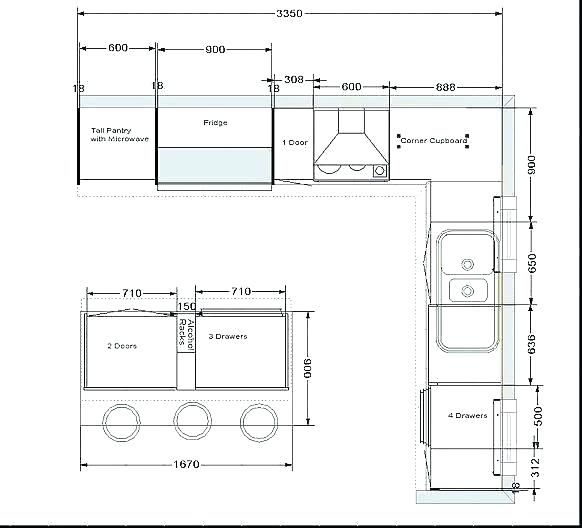 ‘Once the island gets so deep that someone needs to climb up on the countertop to clean it, you have an island that is too big,’ says Jay Kallos.
‘Once the island gets so deep that someone needs to climb up on the countertop to clean it, you have an island that is too big,’ says Jay Kallos.
Sarah is a freelance journalist and editor writing for websites, national newspapers, and magazines. She’s spent most of her journalistic career specialising in homes – long enough to see fridges become smart, decorating fashions embrace both minimalism and maximalism, and interiors that blur the indoor/outdoor link become a must-have. She loves testing the latest home appliances, revealing the trends in furnishings and fittings for every room, and investigating the benefits, costs and practicalities of home improvement. It's no big surprise that she likes to put what she writes about into practice, and is a serial house revamper. For Realhomes.com, Sarah reviews coffee machines and vacuum cleaners, taking them through their paces at home to give us an honest, real life review and comparison of every model.
design examples with photos :: Eurostyle
In this section you will find answers to your questions
The interior of a kitchen with an island involves the location in the center of the room of a table or an element of a set with a countertop - the very “island”, which can be represented by a dining table, a work surface with or without household appliances, a bar counter and other furniture components. This solution allows you to expand the functionality of the headset and make it more ergonomic. Consider the most popular options for the island in the kitchen, its pros and cons, and also note the key features of interior planning.
This solution allows you to expand the functionality of the headset and make it more ergonomic. Consider the most popular options for the island in the kitchen, its pros and cons, and also note the key features of interior planning.
What role can the island play in the interior of the kitchen?
A kitchen with an island is an idea of restaurateurs who sought to make the work of cooks more convenient and provided access to the working surface of the tables from two sides. However, in home interiors, its functionality is much wider, there are more design options. Let's note the most popular types of kitchen island:
- Bar counter. A functional and stylish solution is to install a bar counter in the center of the room. At the same time, only half of the countertop can perform the function of a rack - the second can be used to organize a work area or install equipment.
- Worktop. It can be a kitchen island with a sink, hob and other built-in appliances, or a classic countertop with cabinets below for convenient storage of dishes, food and utensils.
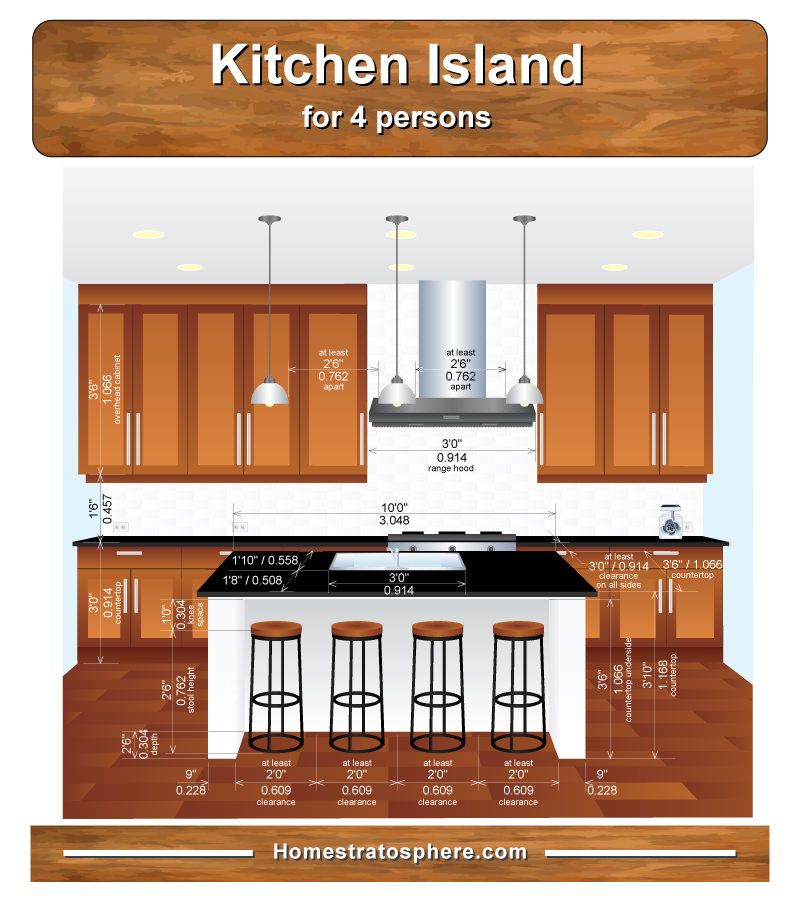
- Dining area. A kitchen island with a dining area allows you to integrate a dining room into the room. This is especially convenient if you need to create 2-3 places and you don't need to set up a massive table in the center of the room.
Less often, the island element performs a decorative function - it plays the role of a stand for flowers, vases, crystal collections and other items that can complement and decorate the interior. However, this is only possible in large kitchens that do not need to save space and visually expand it. Putting a decorative island in small spaces is impractical.
Which areas are suitable for this solution?
Designing a kitchen with an island requires space, even if it's a small central table. It is important to ensure a sufficient width of the aisles and the ergonomics of the headset located against the walls.
This solution is recommended for owners of kitchen areas of 25 sq. m. m. and more. It is realistic to make such a set for a smaller room, but you will have to sacrifice the dimensions of the cabinets and countertops located near the walls, or abandon them.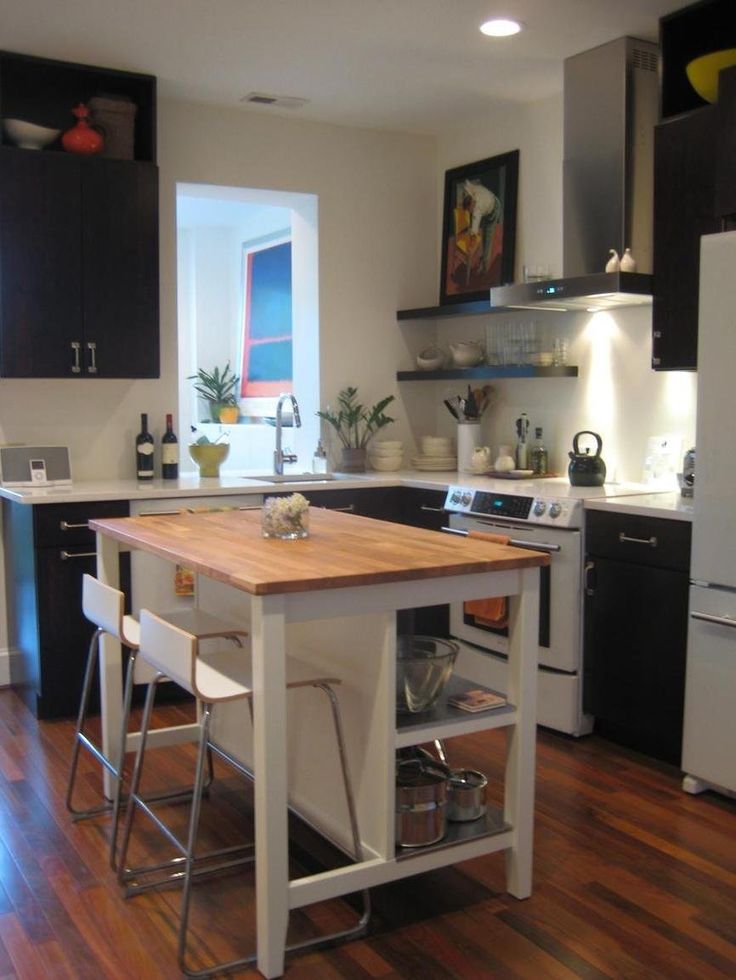
Pros and cons of an island in the kitchen
This solution has a set of advantages and disadvantages, which can be leveled by the features of the layout and dimensions of the room. We note the pros and cons of the kitchen with the island, which must be taken into account in the selection process.
Benefits:
- Ergonomics. The island zone complements the "working triangle" and allows you to speed up the cooking process.
- Functionality. Kitchen island with a stove, sink, household appliances and other necessary equipment components make the room more comfortable, open up new functionalities.
- Aesthetics. Island zone is an original, spectacular solution that allows you to create a set with a stylish and attractive design.
- Zoning. The minimum distance from the kitchen to the island is 1 meter. Its installation will visually isolate the cooking area from the rest of the room, which is especially convenient when combining a room with a dining room or when designing an interior for a studio apartment.
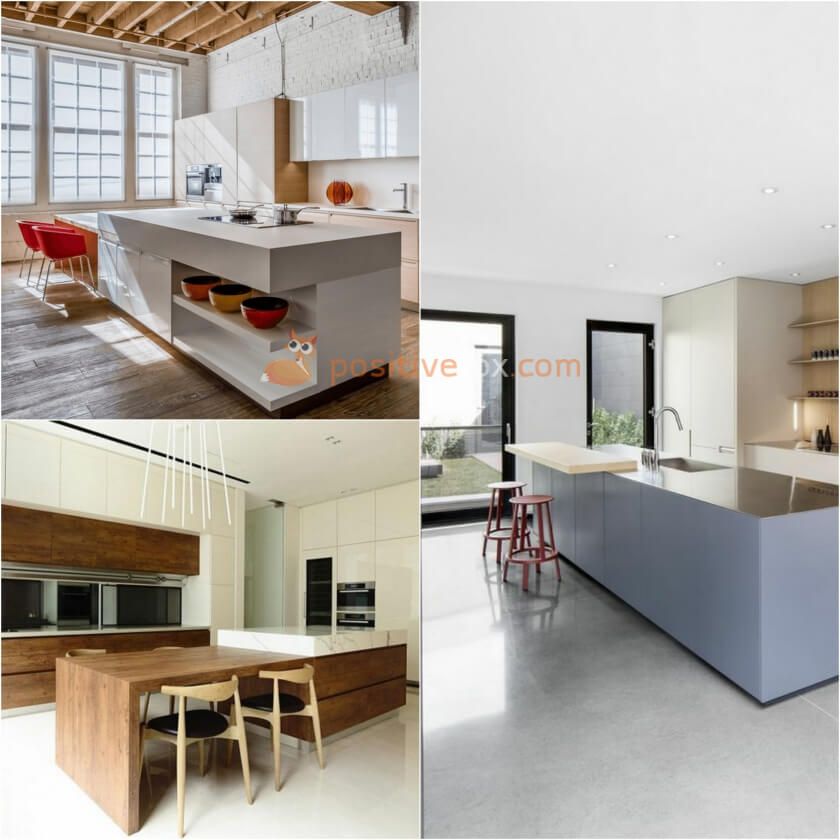
- Dining area integration. The island can serve as a dining area - it can be a bar counter or a full-fledged dining table. In this case, you are integrating the dining area into the kitchen.
Drawbacks:
- Loss of area. Even a small island will take 1-3 square meters from the premises. m. area.
- The need for additional communications. An island with a sink, stove, oven and other models of built-in household appliances and plumbing will require additional communications.
- The complexity of planning in small rooms. This solution is rarely suitable for small rooms - it is worth choosing a small island with an area of \u200b\u200bnot more than 1 sq. m.
Please note: when located in the area of \u200b\u200bthe oven and hob, it is necessary to supplement the ventilation system. The hood for an island kitchen should be located directly above the stove, regardless of its location.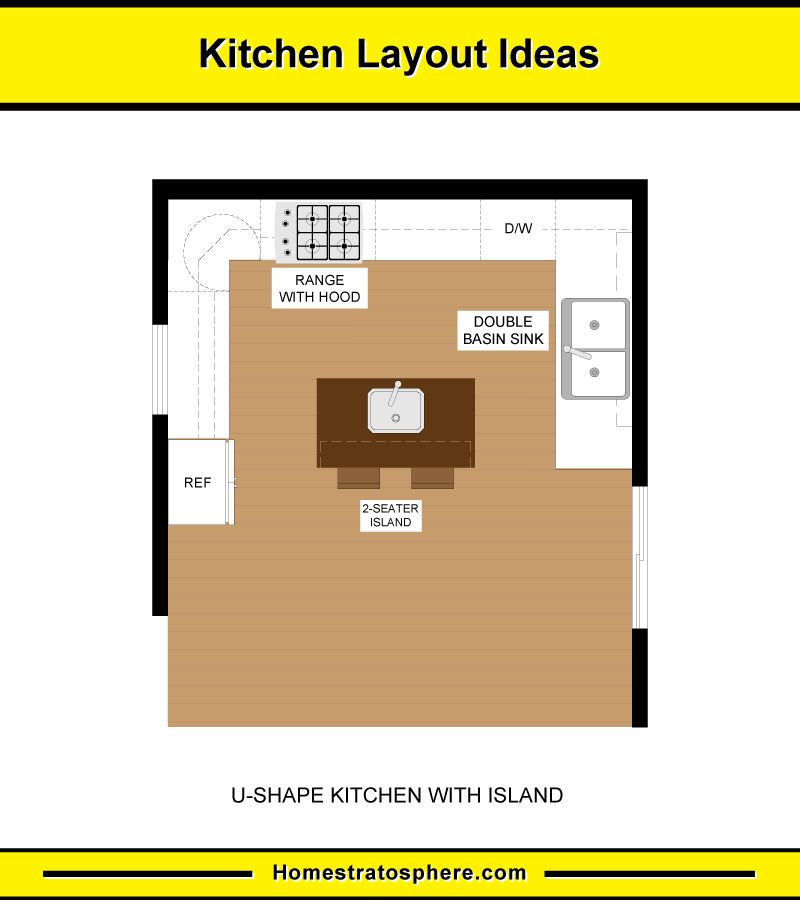
Ideal parameters for a kitchen island
They always depend on the area of \u200b\u200bthe room and the features of its layout. The size of the kitchen island for a room of 15-25 square meters. m. should be 1-2 square meters. m. This is quite enough to place a small table or bar counter. At the same time, the size of the island in the kitchen with an area of 25 sq. m. may exceed 3 sq. m. m. depending on the layout.
Of decisive importance is the type of headset, as well as its location along the walls. In some cases, countertops around the perimeter may be completely absent - the working area is moved to the middle. Otherwise, the distance between the kitchen and the island must meet the requirements for the comfort of the room. Otherwise, the level of comfort of the room is sharply reduced. Therefore, the size of the passages must be at least 1 meter wide.
Kitchen layout
Island in the kitchen - is it convenient? Yes, if you pay attention to the layout and achieve its compliance with the functionality and dimensions of the furniture.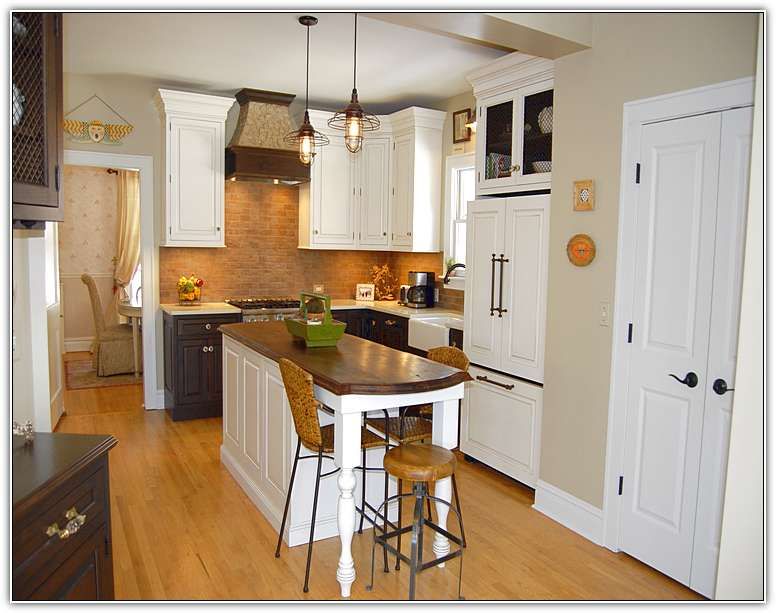 The main rule is the lack of piling up of interior items and a sufficient amount of free space. Otherwise, the island can occupy any place, have any geometry.
The main rule is the lack of piling up of interior items and a sufficient amount of free space. Otherwise, the island can occupy any place, have any geometry.
A kitchen set with an island can be straight, parallel, angular or U-shaped. In this case, the island zone can have any geometric shape - from a classic rectangle to a square, rhombus, circle or oval. It all depends on the chosen solution and the features of the furniture.
Interior design features
It is necessary to consider lighting, ventilation and communications. Considering the maximum of options will help you understand how to make the island in the kitchen both convenient and functional. Try to consider the following interior design rules:
- the island hood in the kitchen should be positioned directly above the stove, oven or hob;
- the layout of the headset located near the walls is standard, the only condition is the width of the passages is at least 1 meter;
- lighting above the island in the kitchen can be represented by a chandelier, pendant or recessed ceiling lights;
- when placing a sink or household appliances on the island, it is necessary to bring communications - for this, the floor will have to be raised by 3-4 cm;
- with a sufficient ceiling height, pendant lights above the kitchen island will help to zone the room - for example, to separate the cooking area from the dining area.
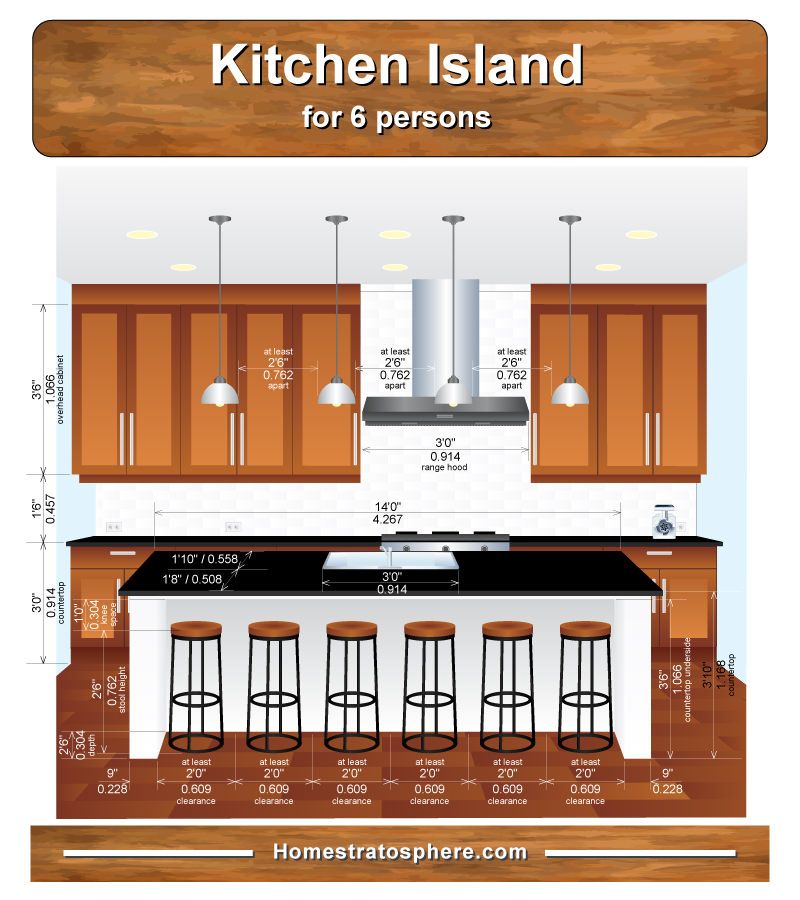
We create bespoke island kitchens, develop unique designs and offer hundreds of ready-made solutions for inspiration. Check out our catalog to appreciate the aesthetics, quality, functionality and ergonomics of our headsets. Contact us with any questions - we will be happy to provide professional advice and help you place an order.
Kitchen design with an island: 11 tips + photo
Natalia | 09/07/2018 | Updated by | Kitchen furniture | 25,968 views | No comments
Contents of the article
The kitchen island was originally used in kitchens in public catering establishments. The table standing in the middle of the kitchen room allowed several chefs to cook dishes at the same time and not interfere with each other. Why are kitchen islands now actively used in ordinary apartments and houses? The answer lies on the surface. You can't even imagine how convenient and functional it is! Of course, a kitchen island is not the most versatile piece of furniture.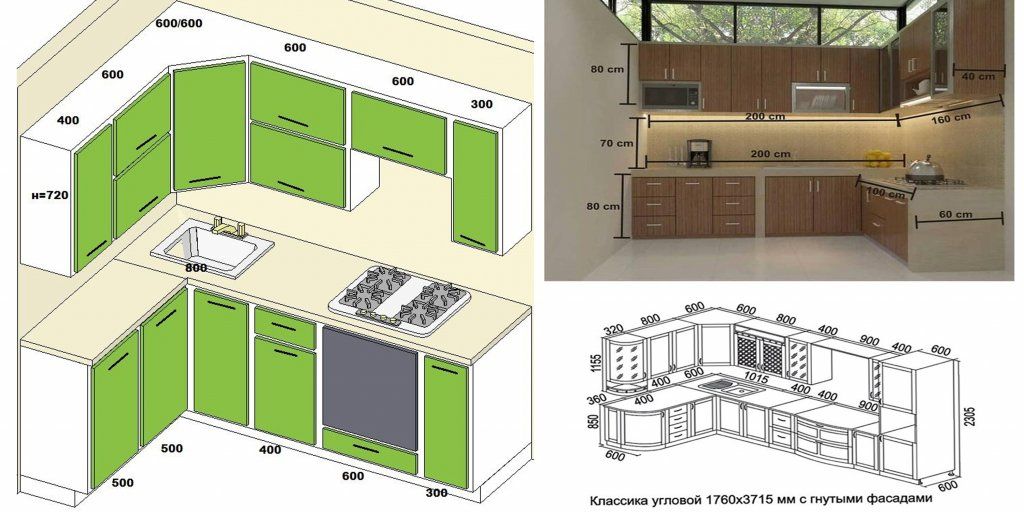 Kitchen design with an island requires a serious and balanced approach. We have collected all the most valuable tips from professionals and inspiring photos to help you decide whether you need a kitchen island, and if so, what size, shape and functionality to prefer.
Kitchen design with an island requires a serious and balanced approach. We have collected all the most valuable tips from professionals and inspiring photos to help you decide whether you need a kitchen island, and if so, what size, shape and functionality to prefer.
#1. Who would like a kitchen with an island?
An island is a table that stands at a distance from the kitchen. It is equipped with its own worktop, can be equipped with a hob, sink and storage system. A kitchen island is not a mandatory piece of furniture, and it will not be appropriate in every kitchen.
So, who can afford a kitchen island?
- Complete island suitable for 20-25 m2 kitchens 2 and above , and there must be a separate dining area.
- Peninsula or small mobile island suitable for kitchens from 15 m 2 .
- The kitchen table will look great on the border of zones in a combined kitchen-living room or studio apartment.
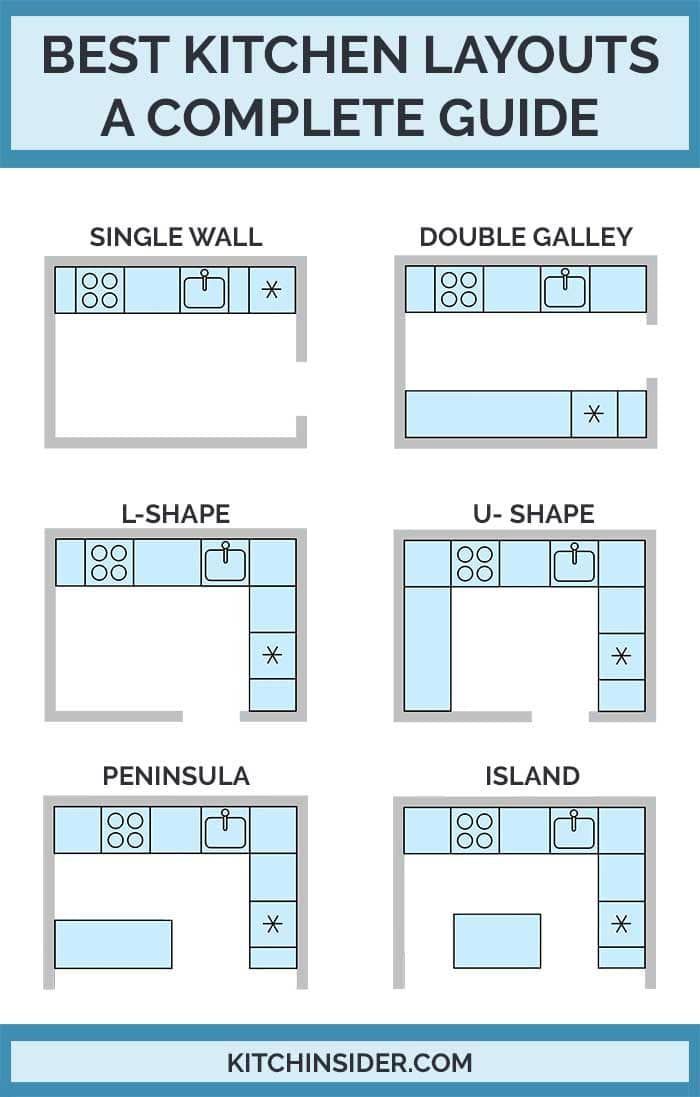
- This is a great option for spacious cottages and country houses.
Is it possible to install a kitchen island in an ordinary city apartment? Difficult. If this is not a modern spacious studio apartment, then you will have to get rid of some partitions, combine the kitchen and living room, obtain the necessary permits and still be content with the smallest version of the island. But if this is your interior dream, then why not?
No. 2. Why is a kitchen island necessary?
The kitchen island can perform one task or a range of functions:
- be part of a “work triangle”. Ergonomics rules say that it is most convenient when the stove, sink and refrigerator are located at the vertices of an equilateral triangle. The easiest way to achieve this layout is with an island;
- become additional or basic worktop ;
- completely or partially replace dining area if chairs are placed on one side;
- can be used as storage place , as a lot of shelves and drawers can be organized under the table top.
Usually, plates, pots, other kitchen utensils and cookbooks are stored in the kitchen island. Sometimes a freezer or dishwasher is built into it.
Designers call the kitchen island the best way to organize large kitchen space in terms of ergonomics.
No. 3. Pros and cons of kitchens with an island
The widest functionality along with decent dimensions allow us to talk about a number of pros and cons of a kitchen island. Let's start with the good:
- the comfort and ergonomics of . Thanks to the presence of the island, all the main elements in the kitchen can be placed closer to each other. The hostess will spend less energy moving between the sink, stove, refrigerator and work surface. Consequently, time, energy is saved, comfort is increased. Moreover, if there is an island several people can cook at once ;
- while cooking a culinary masterpiece, a hostess can easily communicate with household members and guests without turning her back on them;
- kitchen island can replace the weighty part of the set and accommodate a hob with oven, dishwasher or sink;
- kitchen island, or rather part of it, can be used as a dining table or a bar counter for small snacks;
- the island can become the main zoning element of the space of the combined kitchen-living room;
- the island looks chic in large kitchens, adds chic and zest to them.
There are also disadvantages:
- depending on the dimensions the island will take from 1 to 3 m 2 of the area , plus enough space must be provided around it for free movement. In general, for small kitchens, a full-fledged island is a pipe dream;
- If you are thinking of placing a sink or dishwasher on the island, then be prepared for the difficulties associated with transferring communications and creating the necessary slope, which may entail raising the floor level. Moreover, in an ordinary apartment it will not be easy to do this.
#4. Distance between the island and other pieces of furniture
To ensure that the kitchen island does not interfere with free movement, opening drawers and the dishwasher, it is necessary to leave enough space between it and the kitchen set or wall.
Minimum distance 100 cm, optimum 120 cm . Only in this case, the kitchen island will really be comfortable and ergonomic, and will not cause inconvenience.
No. 5. Standard dimensions of the kitchen island
The optimal parameters of the island depend on the size of the kitchen and the personal preferences of the household:
- in a spacious kitchen, you can safely place an island up to 2 m long , if there is a need for such a giant;
- the standard for the kitchen island are 180*90 cm and 180*60 cm . Three standard modules will fit in length;
- width usually ranges from 60 to 120 cm . A compact island 60 cm wide on one side will have blank cabinet walls. In an island 90-120 cm wide, you can fit lockers on several sides;
- the island is usually made with a height of 85-90 cm , like the rest of the set, so that you can cook comfortably. If a dining area is provided, it may be slightly lower. An alternative option is to keep the height of the tabletop the same level and buy higher (semi-bar) chairs. Part of the tabletop can be raised, thus organizing the bar counter.
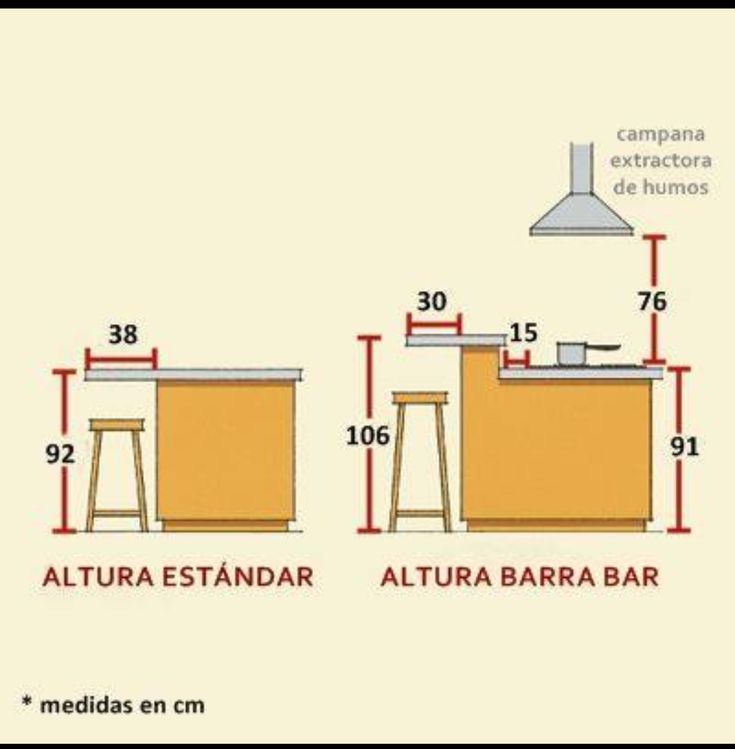 Its logical conclusion will be bar stools.
Its logical conclusion will be bar stools.
#6. Kitchen island shape
Designers suggest that island shape should match kitchen island shape , i.e. for a rectangular room, a rectangular island is suitable, for a square room, a square one. Rectangular and square islands have become so popular that many do not even imagine this element of a different shape.
In addition to the standard islands, there are semi-circular, oval, intricately curved, triangular and more. To order, you can make an island of any shape and size. The main thing is that, along with extravagance and unusualness, the island should be functional, harmoniously fit into the existing interior. Oval and round tables are convenient because they do not have corners and reduce the risk of injury, but they take up more space. Broken, triangular and other design options are rarely functional, they require huge areas to arrange them without risk to health.
When choosing a form, it is necessary to look not only at the shape of the kitchen, but also the type of arrangement of the kitchen set .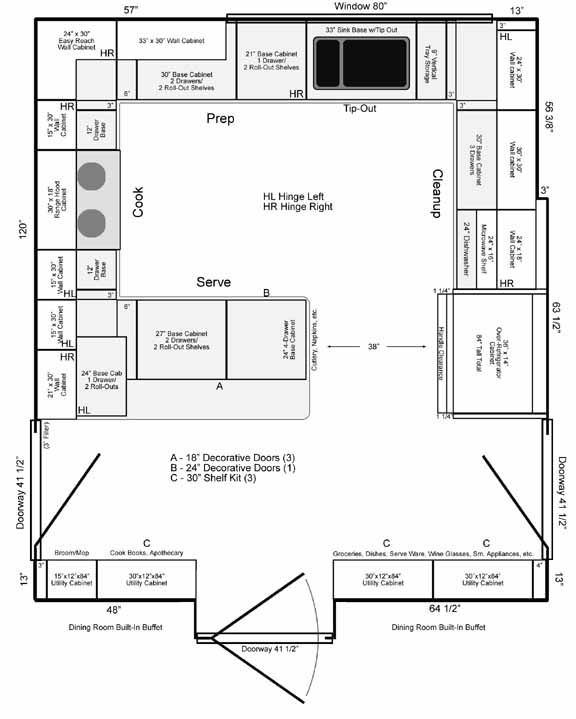 If an L-shaped layout is chosen, then a square island will be a good solution. For U-shaped kitchens, a rectangular island is usually chosen, but the final decision depends on the size of the room. If the headset is located in one line, then you can choose an island of any shape. Islands of bizarre shape are best supported by the same unusual set.
If an L-shaped layout is chosen, then a square island will be a good solution. For U-shaped kitchens, a rectangular island is usually chosen, but the final decision depends on the size of the room. If the headset is located in one line, then you can choose an island of any shape. Islands of bizarre shape are best supported by the same unusual set.
No. 7. The main types of kitchen islands
The standard kitchen island is a free standing unit. But what about those who have a kitchen not large enough to accommodate a full-fledged island, but want to have such a useful accessory? It's good that they came up with several interesting varieties of ordinary islands:
- peninsula differs from the island only in that one of its ends adjoins a wall, kitchen set or window sill. This solution allows you to significantly save space, while retaining the maximum benefits of a full-fledged island;
- mobile compact island . These are now in the collections from IKEA.
 When necessary, it can be placed in the kitchen, fixed and used as an additional countertop and storage space, and then rolled, for example, into a pantry or pushed against a wall;
When necessary, it can be placed in the kitchen, fixed and used as an additional countertop and storage space, and then rolled, for example, into a pantry or pushed against a wall; - archipelago is a kind of kitchen island designed for spacious rooms. The archipelago is a system consisting of multi-level structures. Thus, maximum functionality is achieved. One part can be used for cooking dinners, the second for eating, and the third can be raised to the level of the bar and used only for snacks.
No. 8. Options for organizing a kitchen with an island
We have already said that the kitchen island is multifunctional . Now let's give examples of how it can be used in the kitchen:
- as an additional work surface. This is the easiest option in terms of implementation, since you do not have to transfer communications. If you like to cook, or there are several people in the family who are actively experimenting in the kitchen, then the additional workspace will only benefit.
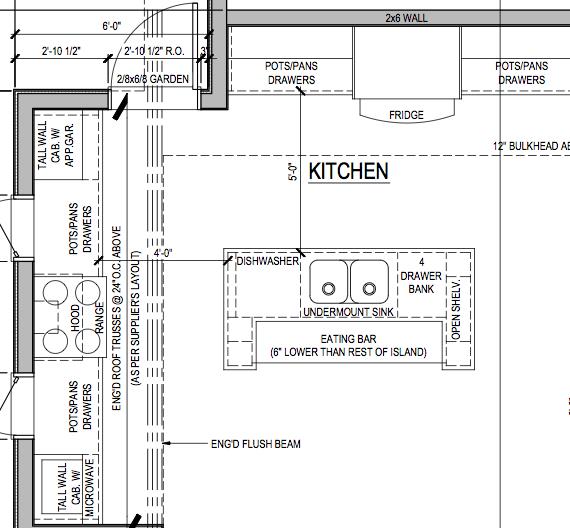 Just remember to place a few outlets on the ends of the island. So it will be easier to use kitchen appliances and charge gadgets;
Just remember to place a few outlets on the ends of the island. So it will be easier to use kitchen appliances and charge gadgets; - island with bar counter , which can become an additional element of zoning. You can organize a bar area due to the countertop protruding from one side, but in terms of height, such a solution will not reach a full-fledged bar counter. An alternative solution is to raise part of the countertop;
- island can flow smoothly into dining table . In this case, it is desirable that its width be at least 90 cm. As for the height, then it’s more convenient for anyone. Someone prefers higher tables and semi-bar stools, then the level of the kitchen island will be the same. Someone likes a dining table of the usual height, then it will be necessary to provide for the transition from one level to another;
- the island with electric hob is more difficult to organize. Not only will you have to supply electricity (it is better to run the cable along the floor), but you will also have to provide for an exhaust hood.
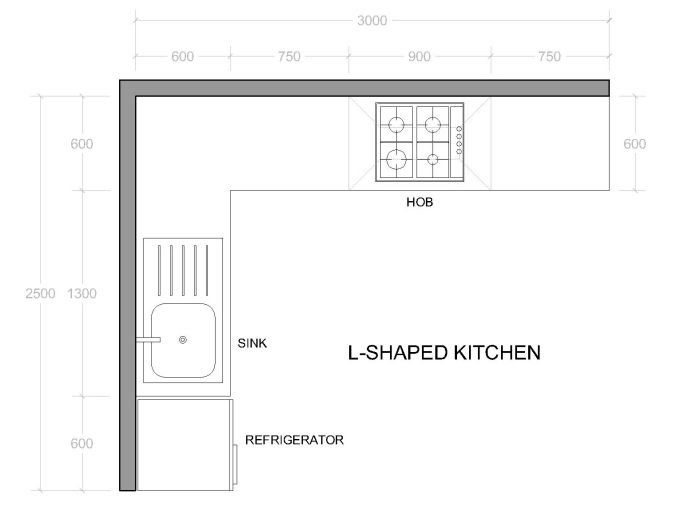 You will have to choose a special model, and even conduct an air duct, and then hide it behind the ceiling structure (stretch and suspended ceilings are suitable). This means that you have to sacrifice the height of the room. But there is a way out - you can buy a hood with recirculation. It draws in air, purifies it and returns it back. Filters will have to be changed often, but if the ceilings are low, this is the only option;
You will have to choose a special model, and even conduct an air duct, and then hide it behind the ceiling structure (stretch and suspended ceilings are suitable). This means that you have to sacrifice the height of the room. But there is a way out - you can buy a hood with recirculation. It draws in air, purifies it and returns it back. Filters will have to be changed often, but if the ceilings are low, this is the only option; - kitchen island with sink will require relocating water and sewer pipes, providing the necessary slope, and sometimes even installing pumping equipment. Well, if you are building a private house, and you can plan the location of communications in advance, as needed. And if we are talking about an ordinary city apartment? We will also have to agree on the project, and it may happen that it will be impossible to place a sink on the island at all. But even if such an option is feasible, do not forget that the pipes passing through the middle of the kitchen under a slope will need to be hidden somehow.
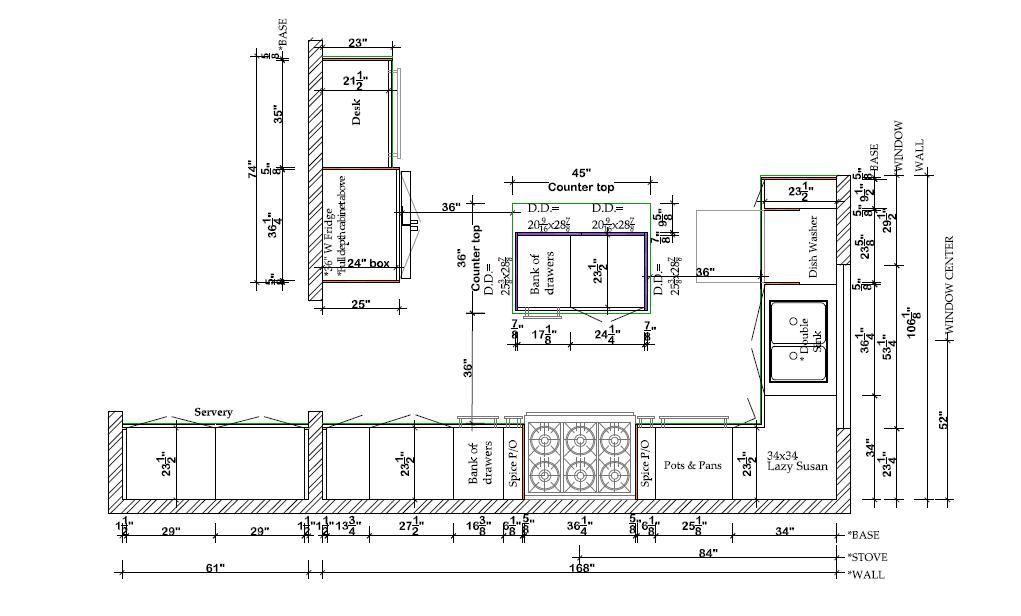 This means that the floor surface will rise, and the height of the room will decrease. The same problems lie in wait if you want to bring a dishwasher to the island;
This means that the floor surface will rise, and the height of the room will decrease. The same problems lie in wait if you want to bring a dishwasher to the island; - island-showcase suggests the presence of a large number of open shelves, where plates, souvenirs, books are beautifully arranged. To heighten the effect, the shelves can be illuminated with LED strip or special furniture fixtures. Open cabinets and shelves can be located around the entire perimeter of the island, or they can decorate only part of it, for example, the one that is turned towards the dining area or living room.
One and the same kitchen island can do several things at the same time. For example, serve as an additional work surface, the location of the built-in oven and snack area.
#9. Style of execution of the kitchen island
The island part of the kitchen should be in harmony with the rest of the interior details in terms of material, shape and color scheme.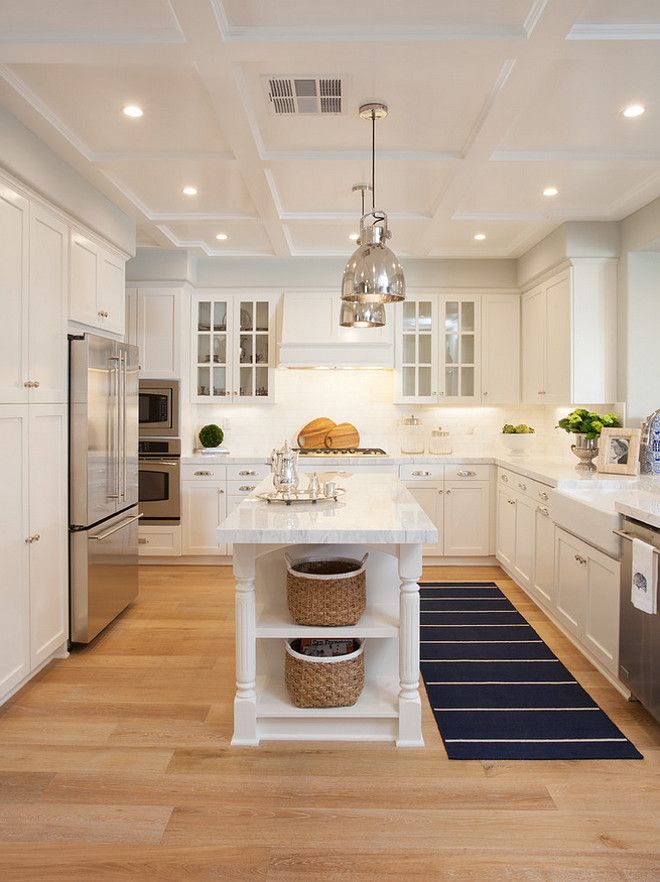 If the kitchen set is made of wood with a stone countertop, then it is better if the island is exactly the same. If the kitchen is spacious enough, then you can afford some liberties and focus on the portable cabinet due to an interesting texture or shade. But even in this case, it is important not to play too much and not lose the overall harmony of the room.
If the kitchen set is made of wood with a stone countertop, then it is better if the island is exactly the same. If the kitchen is spacious enough, then you can afford some liberties and focus on the portable cabinet due to an interesting texture or shade. But even in this case, it is important not to play too much and not lose the overall harmony of the room.
To create a harmonious kitchen interior, it is necessary, first of all, to build on the chosen style and select the appropriate island for it:
- for classic interiors , a massive island made of polished wood is suitable, the countertop must be either wooden or stone. Carved elements, gilding, panels and other decorative elements are welcome. The color scheme matches the interior, but light shades and rich browns, olive, black-gray and gray-white are preferred. Above the island you can hang a large crystal chandelier;
- for modern interiors (hi-tech and minimalism), a laconic island that fully matches the kitchen set will suit.
 Minimum decor - maximum practicality. Materials such as artificial stone, steel, tempered glass are preferred. On the island, you can place an induction cooker, build in an oven or a sink. The main task of modern interior styles is to simplify a person’s life and daily worries, so the idea of a kitchen island fits very well into this concept. Do not forget to organize a convenient storage system and allocate some space for snacks;
Minimum decor - maximum practicality. Materials such as artificial stone, steel, tempered glass are preferred. On the island, you can place an induction cooker, build in an oven or a sink. The main task of modern interior styles is to simplify a person’s life and daily worries, so the idea of a kitchen island fits very well into this concept. Do not forget to organize a convenient storage system and allocate some space for snacks; - The island also fits into the Provence style. In this case, the preferred light pastel shades are: white, milky, light lavender, mint, turquoise, etc. The base is made of wood, the countertop is made of natural or artificial stone of a light shade. A large number of drawers, shelves, wicker baskets are welcome, some of the shelves can be covered with checkered, flowered or striped chintz curtains. Special honeycomb shelves for storing bottles of wine will look good - Provence, after all, belongs to the wine-growing regions;
- For country style, it is worth picking up a massive, even rough island made of natural wood.
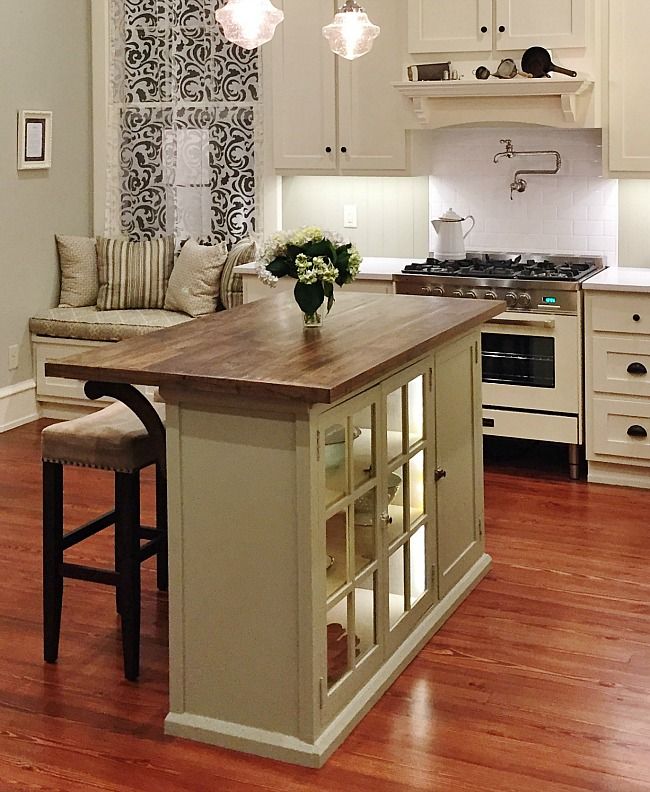 The texture of the wood is best preserved, so lacquering is preferred over painting. Large shelves and cabinets, wrought iron handles, stone, wood or ceramic tile countertops - all this will complement the country style. Some of the shelves can be left open, new furniture can be aged;
The texture of the wood is best preserved, so lacquering is preferred over painting. Large shelves and cabinets, wrought iron handles, stone, wood or ceramic tile countertops - all this will complement the country style. Some of the shelves can be left open, new furniture can be aged; - in the loft style, the island almost always takes on the role of a separator between the kitchen area and the living room. The cabinet should be as simple as possible, you can use brickwork, a steel pipe structure as a base, and choose stone or steel as a countertop. You don’t have to hide the air duct from the hood - its presence will only emphasize the chosen style;
- An island with a bizarre shape, with smooth, streamlined facades, will fit into the Art Nouveau style. Preferably glass and metal;
- Scandinavian style emphasizes simplicity and functionality. The base of the island can be wood, brick, concrete or metal, the preferred countertop material is wood. It is better to choose a light-colored island.
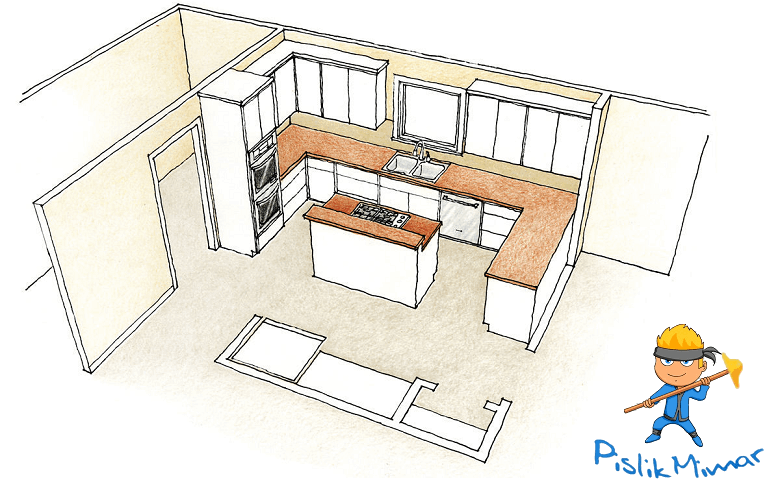
#10. Island in the interior of a small kitchen
It is generally accepted that the island is a privilege only for owners of huge kitchens. Is this statement correct? Yes, but only in part. Classic bulky stationary island - this is only for large rooms , but if you have a small kitchen you can find a way out, however, you will have to make compromises.
Take a look at small stationary models. An island with dimensions of 120*60 will allow you to equip additional workspace and storage space, if necessary, divide the room into zones, but will not take up too much space.
Also note the various withdrawable and mobile versions . You can order a set in which the island will fully or partially slide into one of the modules. An alternative option is to attach the countertop to the wall and raise it as needed (for snacking, cooking). You can consider designs on wheels.
In some kitchens, the island is equipped in the bar counter format. The main task of such a solution is to separate the kitchen area from the recreation area. From the side of the living room, the rack is completed with high chairs, and from the side of the kitchen, it can be supplemented with a folding table top, which can be raised if necessary and used for cooking.
The main task of such a solution is to separate the kitchen area from the recreation area. From the side of the living room, the rack is completed with high chairs, and from the side of the kitchen, it can be supplemented with a folding table top, which can be raised if necessary and used for cooking.
No. 11. Design Tricks
Professional designers advise:
- to make a kitchen with an island visually more spacious and airy, the base of the island can be made discontinuous. Of course, in this case, you will have to sacrifice some storage spaces or areas for installing built-in appliances, but you can find a balance between practicality and airiness;
- Shelf can be hung above the island. mensolu. Initially, these shelves were used in country and Provence style for convenient storage of pots, pans and other kitchen utensils. This solution looks most successful in a rustic style, but the mensolu can also be built into other interior solutions;
- don't forget about the quality lighting of island, because it will be at the epicenter of cooking, snacking and maybe even dinner.
